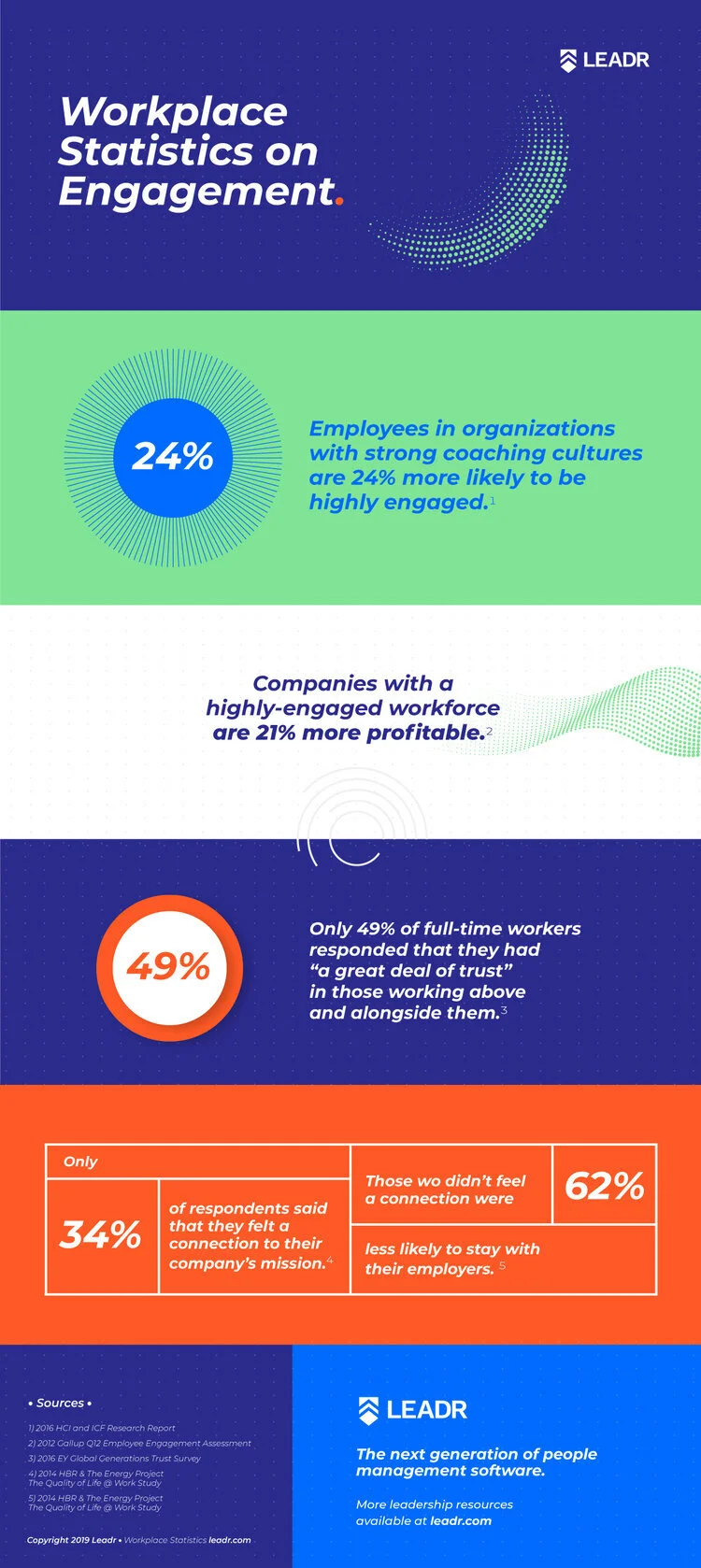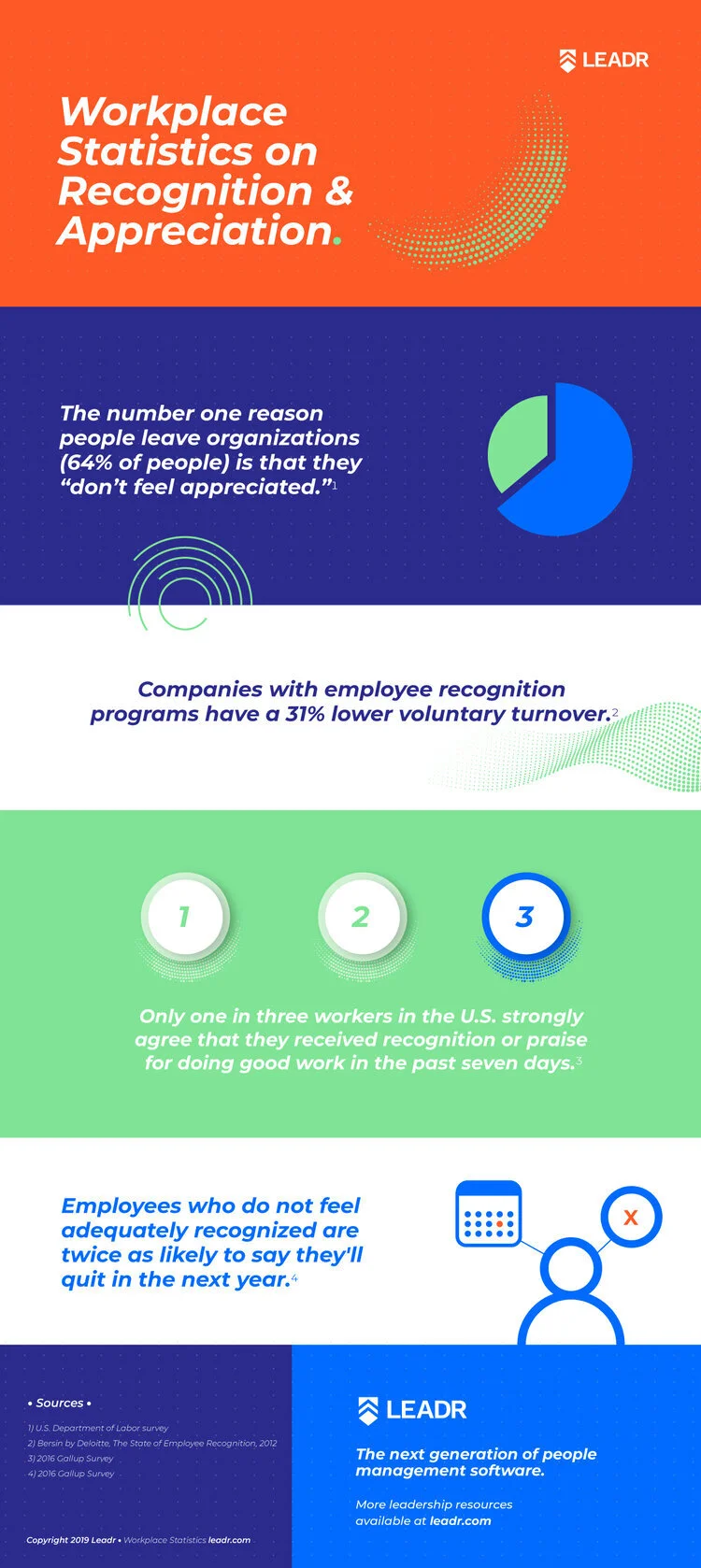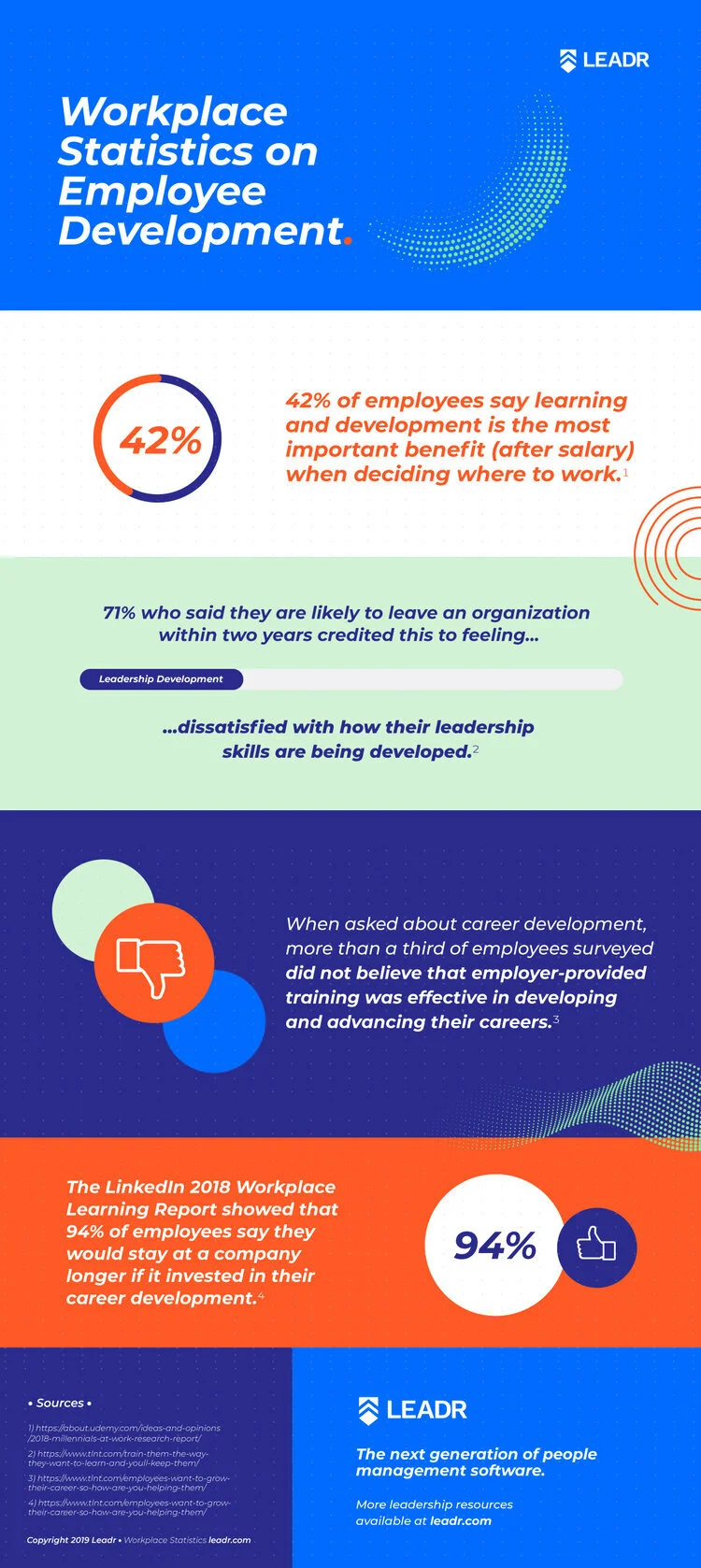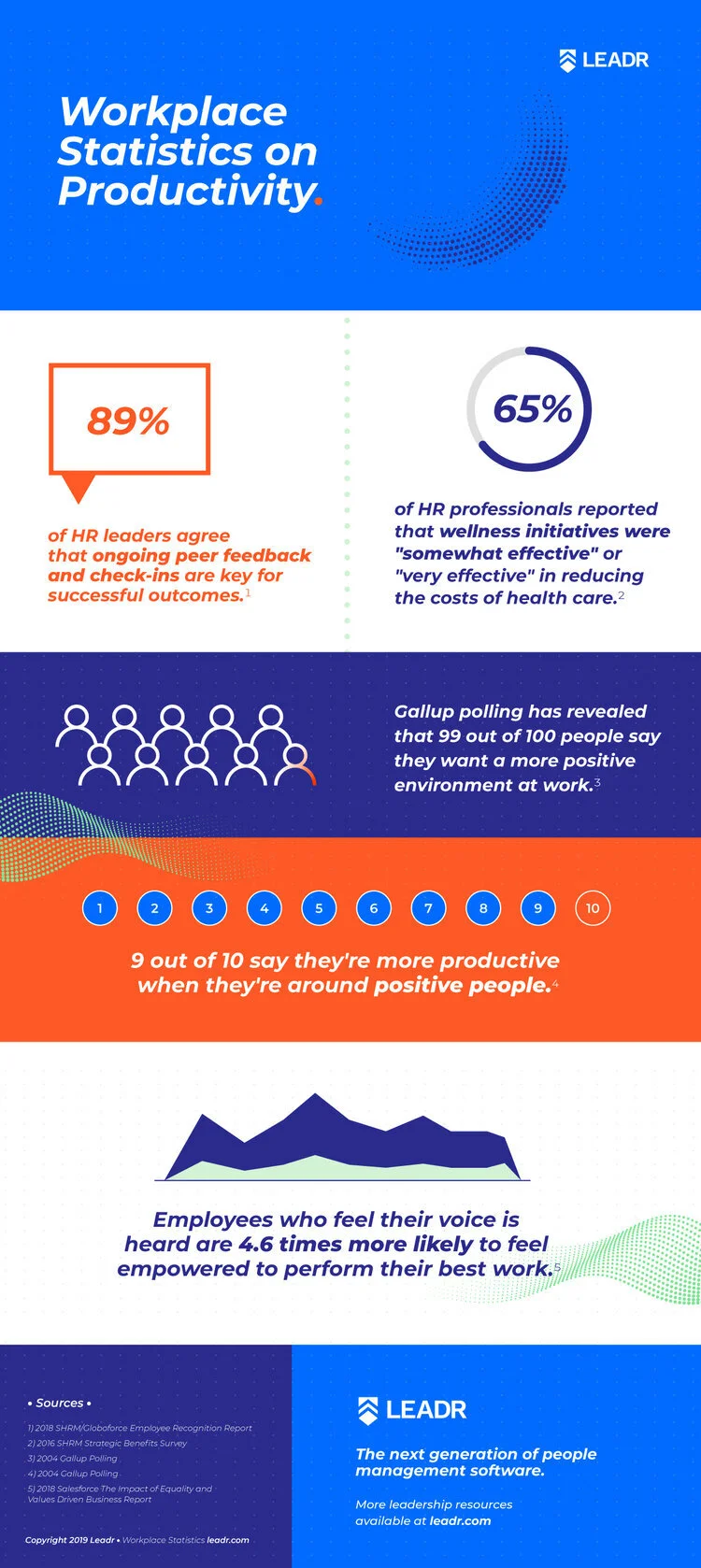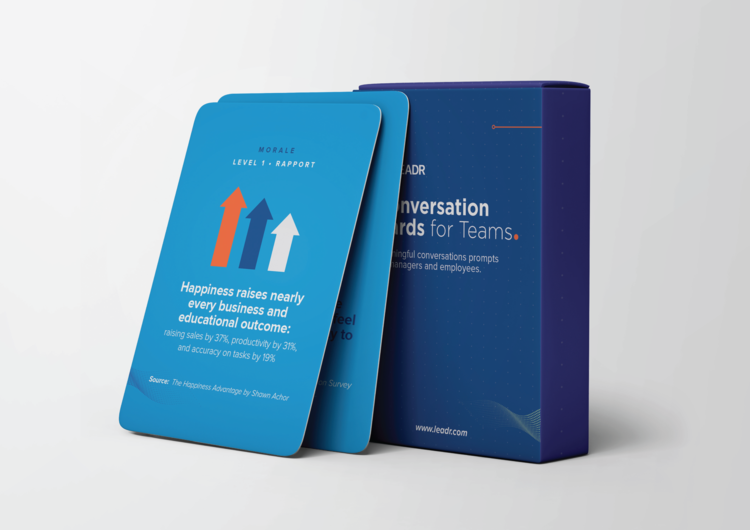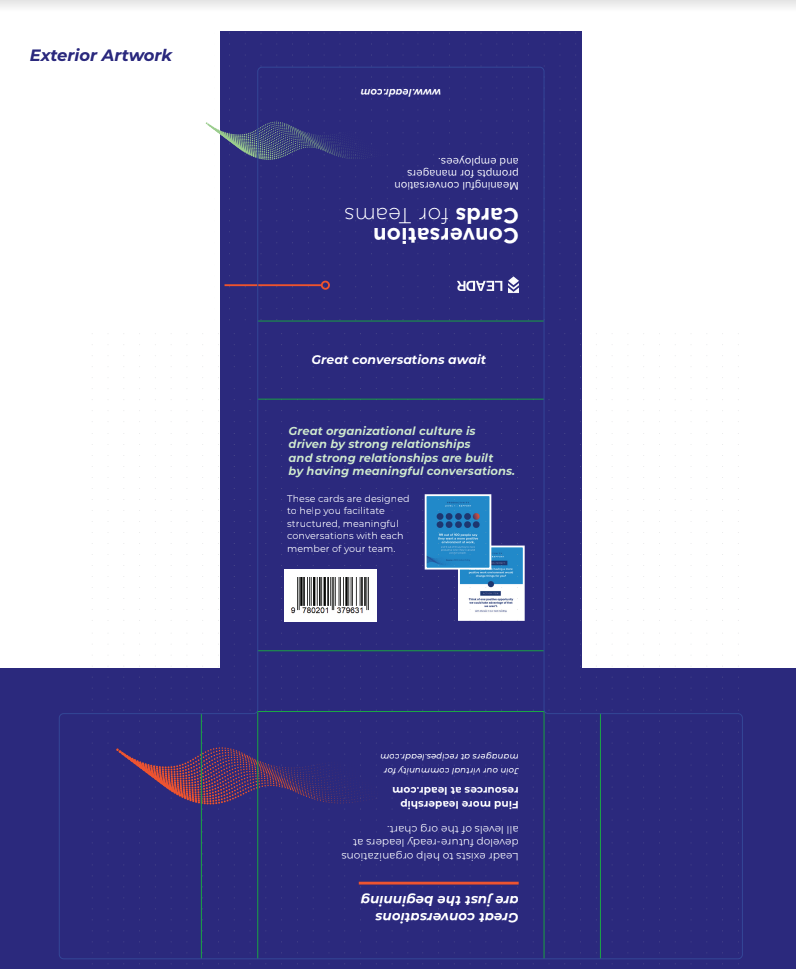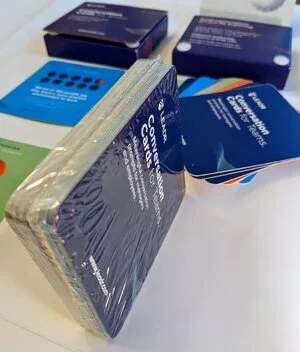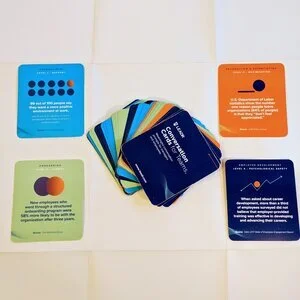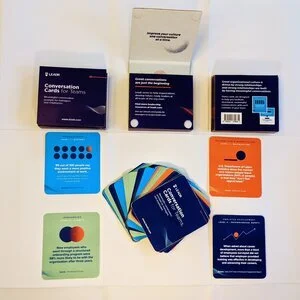An Account Based Marketing (ABM) strategy from start to finish
Client: Leadr
Project: ABM Strategy for a Startup
Capabilities: Content Strategy, Brand Strategy, Marketing Strategy, Copywriting, Agency Management, Sales Enablement
Much has been made lately about account-based marketing (ABM).
What is ABM? In short, it’s a marketing strategy that consists of a list of known targets, a set of personalized offers or gifts, and a well-defined distribution and follow-up strategy as you deliver the personalized offers to the known targets.
This is not a post to overwhelm you with complex terms and software choices. This is simply a look at one example, from start to finish.
I hope you find it helpful.
-Derek
I started working with the Leadr team in the second half of 2019.
They are an HR tech startup, selling B2B, a product that could best be described as people management software.
In their particular case, they were trying to reach a very specific business type - medium-sized churches based in the U.S. The entire industry segment (churches in the U.S.) is quite large - ~300,000 accounts, however the accounts that were a good fit as early-stage customers was a much smaller percentage - only about 6-12,00 accounts.
This led to a couple of consequences:
It made identifying the ideal customers relatively straightforward. In fact, the entire account list had been prospected by the sales team, including key decision-makers, email addresses and physical addresses.
However, they had no permission to mass email this list which meant they were calling each account one by one. This was effective for those accounts who were ready to consider the purchase now, but many were not.
With only 6-12,000 accounts, the entire account list would be reached with phone calls in a short period of time, and then what? With a pool this small, it’s easy to burn relationships and establish a bad reputation.
Traditional marketing tactics would rely on using job title or interest-based targeting to serve ads, however this would result in a lot of ads delivered to people outside of the ideal market.
In fact, early testing of this type of targeting, even when combined with a lookalike component, resulted in extremely high cost-per-result rates.
The conclusion that led to the strategy:
Therefore, we needed a highly relational way to equip a cold-calling sales team to make meaningful connections with a very small pool of a pretty large target market, without being able to rely on traditional ad targeting.
Here's what we did.
Before we move on
When developing your own strategy, have you taken the time to come to these conclusions? It’s easy to repeat tactics from a past role or borrow best-practice lists from the internet’s brightest marketing minds, however, every situation is different.
Take some time to make your own list of realities, constraints, and unique assets.
The work followed this outline and I’ll explain these step by step below:
Create a foundation of multi-purpose content
Bridge the digital-physical divide
Establish credibility
Create a foundation of multi-purpose content
Statistics were a hugely shared content type in the industry. Presentations, reports, blog posts, etc. - But these statistics were often outdated or poorly represented, making them harder for our audience to use. So, we spent a good chunk of time and did our own research of the research. Mining through the data to find the source of the statistics, making sure the stat was current and represented correctly.
We did this for 93 different statistics, but we didn't stop there.
We knew it wasn't enough to curate statistics, we also needed to make them relevant, actionable, and visual. We made them relevant by grouping them into categories so that someone could search for the stat they cared about most. Then, we made them actionable by writing a suggested conversation prompt and action item for each statistic. Then we made them visual by creating a downloadable infographic for each category.
Click on the thumbnails below to expand the images and see the entire infographic.
We described the final long-form blog post in this way:
"We combed through 1,000's of pages of research so you don't have to. Every stat you need on employees, engagement, productivity, stress, millennials & more - all linked to their original source - including free downloadable infographics." check out the post
As part of the foundation, we created six long-form articles of this type.
Bridge the digital-physical divide
Part one - the physical product
Since we already had built a foundation of long-form content, it was a relatively simple process to convert this into other formats. But what formats and what content to focus on first?
Usually, if you're selling software, you're likely to think about promoting the features, like better goal-setting or greater productivity. But we tapped into something deeper: most people feel awkward at work, especially in one-to-one meetings. They don’t always know whether they should just complete a to-do list or talk about developing their professional potential, or how to give and receive constructive feedback.
Therefore, we knew we wanted the product we created to help facilitate "better conversations" and what better way to do it than cards you can actually break out at the next team meeting.
This thought led to the product, "Conversation Cards for Teams."
The conversation cards were based on the content from the article we’d written on workplace statistics.
I set to work rewriting and editing all of the content and mocking up some wireframes of the cards. I then had our designer create original artwork and data visualizations for the statistics. Once I had a nicely designed deck, I posted about it on LinkedIn, hoping for a few people who would be willing to test it out.
I ended up with over 200k impressions on that post and over 100 responses. I sent the PDF out to each of these folks and then incorporated their feedback into a v2 of the concept.
Once this was designed, we worked with a printer to design a custom card box that could hold up to being shipping in the mail and being opened over and over in a workplace. Then I wrote the packaging copy and we had these printed and sent to the warehouse.
A few more images of the finished deck, along with the workbook we made using one of our other long-form posts. We printed 1,000’s of the cards and books and both were integrated into the ABM sequence. This gave us two really nice, printed pieces to send to our accounts - cards to one persona and two copies of the book to the other persona at the same organization.
Part two - the distribution
As a marketing team of one, we clearly needed to outsource the distribution, but we didn't have a large budget for a big ABM software like Terminus or Sendoso. However, we did have the addresses of all our target accounts and a print-ready product. So, I found a great fulfillment partner named Givington's, and while they typically don't support ABM programs, we found a way to put it all together.
The printed products were ordered with barcodes attached and sent to their warehouse, where they were cataloged, then picked, packaged, and shipped according to a spreadsheet of target mailings I uploaded each month, barcodes included. Emails were sent to both the prospect and the sales representative for "order confirmation" and "delivery confirmation", which kicked off a 21-day cadence of meaningful follow-up between the two.
During COVID-19, we found that even if congregants aren't there in person, church employees are still present at the building at least once a week to receive our packages.
Our sales representatives reported that with the cards and book as a talking point, conversations with prospects had become both more intentional and more natural compared to traditional cold calling. Even if the prospect wasn't ready to buy, now there was a meaningful connection made and a reason to follow-up later.
Build credibility
While all of this was going on physically, we were also using geo-targeted ads to blanket the accounts with a curious brand awareness campaign. The goal was to use digital channels to prompt a real-life conversation.
We used a company called Blis to help us deliver banner ads to anyone with a mobile device who entered into the geo-radius of the targeted account at least 3x a week. The target address list was specifically those accounts that were going to be received either a book or deck of cards.
The ads didn't need to convert into a form fill, so we showed them a picture of the books or cards with a message - "these books/cards headed your way." Then, if they clicked through to the landing page, they were given more information about the content with a message to check with their manager to see if they'd gotten the gift yet.
We mapped this out in such a way, that if continued, in one year, every single account in the target market would have had as many as 10-20 meaningful interactions with our team.
This was not only a direct response play, but it was also about long-term brand awareness, relationship building, and establishing us as a credible vendor even though we were still a young startup.
In conclusion
Our print assets were a fantastic alternative to expensive, inefficient Facebook ads and standard blog posts. We were impressing our prospects with something tangible that would add value to their operation and let them know we were a legitimate, trustworthy long-term partner, despite being a new company.
On top of that, these two print pieces were so well done, that they instantly gave us a competitive advantage. No other software providers would be able to easily replicate these content efforts.
If I were to boil it all down to a nice list, I’d say something like this.
Identify target accounts (specific people at the accounts as well)
Identify the value you want to convey - what is the unique benefit of your product/service and how can you communicate that value through a gift or offer?
Get to work creating the offer, gift, content, etc.
Get to work building out your systems to manage it all (print, ship, track, communicate, and all of the above)
Get to work aligning internally between departments (often marketing to sales to executive level for budgetary approval)
Expand distribution and impact by simultaneously running digital campaigns even as you are mailing gifts, emailing and following up by phone
Map out the future - try and think long-term while still working hard to gain short term wins.
LOOKING FOR A STRATEGIC COPYWRITER TO ASSIST YOUR TEAM?
My name is Derek and I write all kinds of things for businesses of all sizes in many different industries. Do you have a writing or strategy need? This is what I love to do.
Send me an email: derek@plain.run

